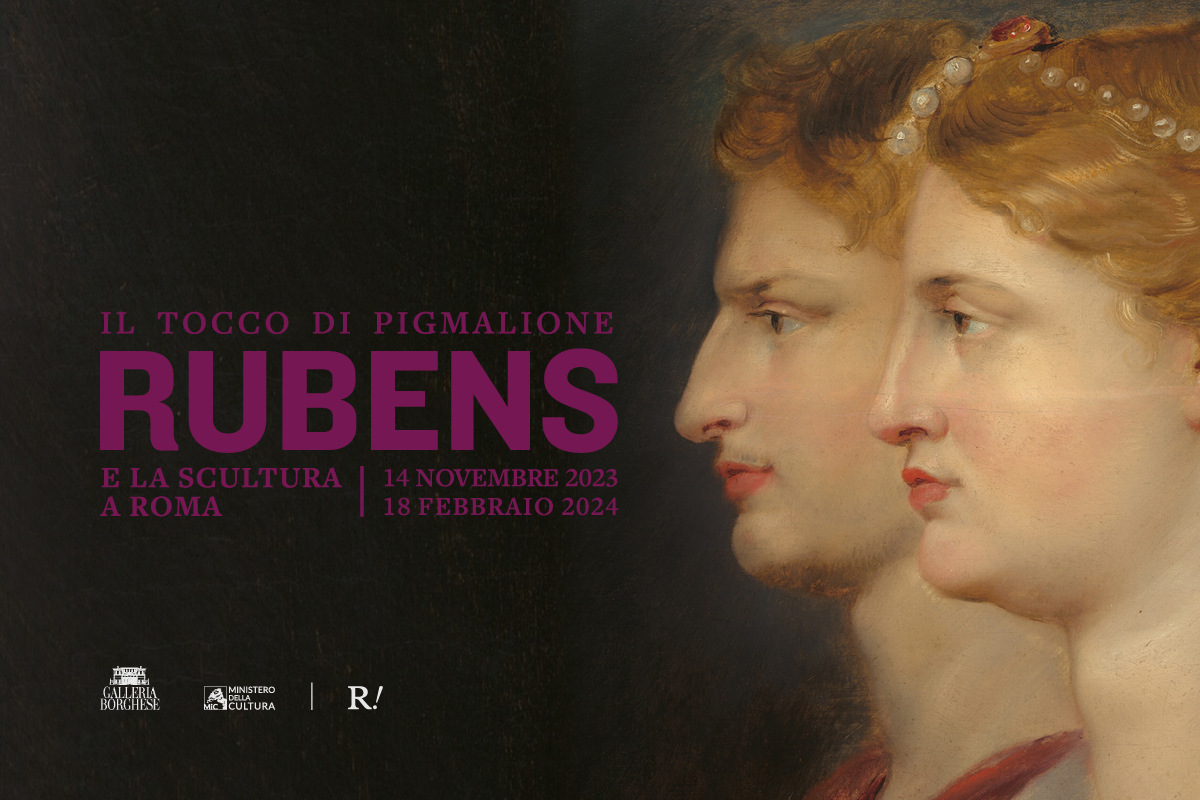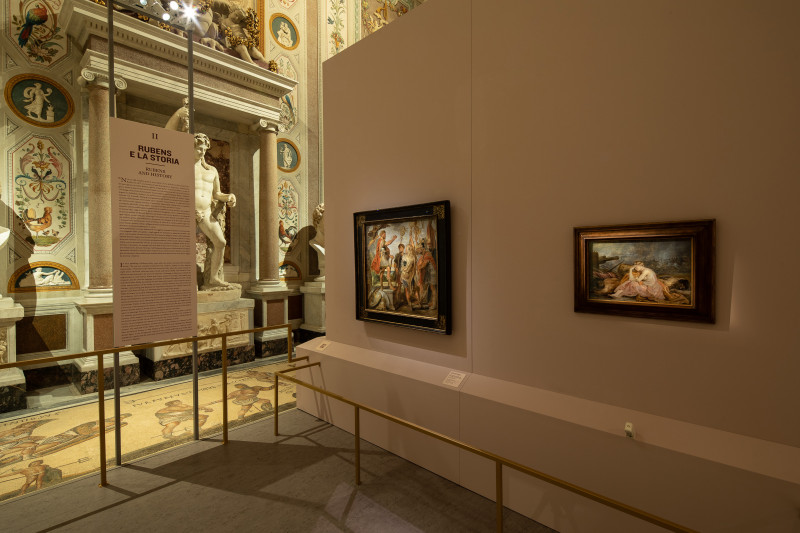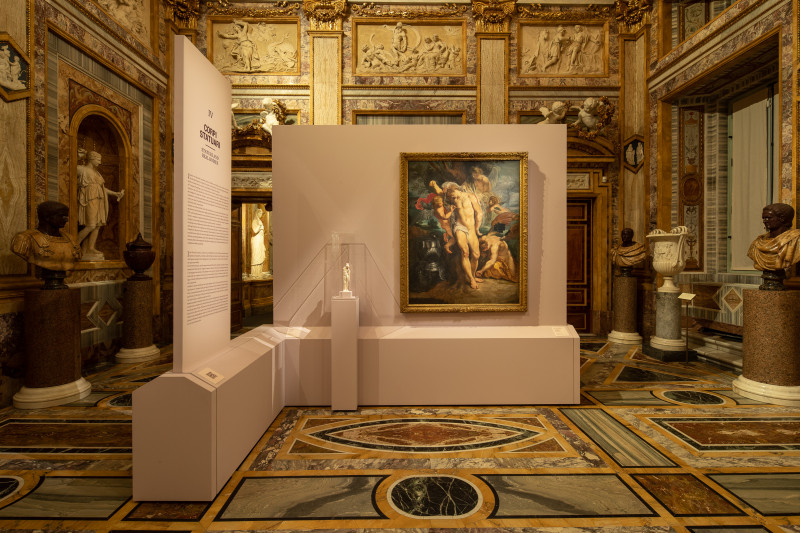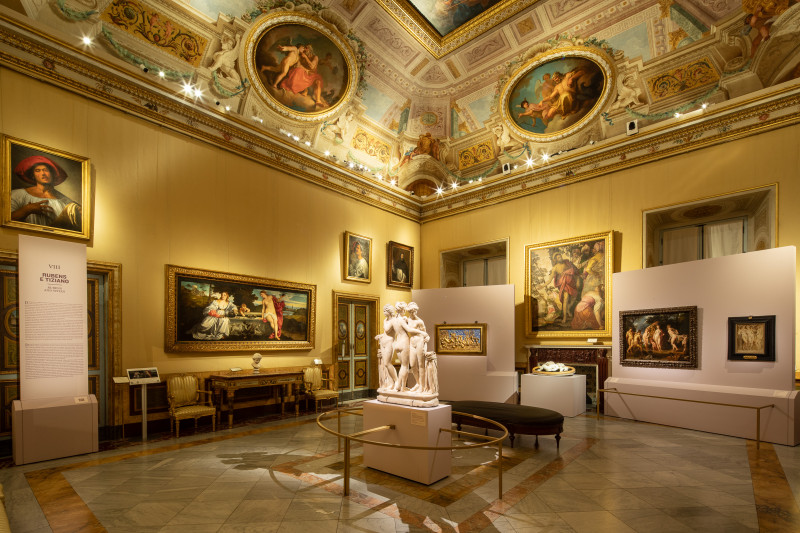The touch of Pygmalion. Rubens and sculpture in Rome

curated by Francesca Cappelletti and Lucia Simonato
November 14th 2023- February 18th 2024
During the seventeenth century Pieter Paul Rubens was considered by his contemporaries, including the French scholar Claude Fabri de Peiresc and some other leading thinkers of the République de Lettres, to be one of the greatest connoisseurs of Roman antiquities.
The Roman transition and the thwarted commission for the Vallicella church, as well as his role in the network of foreign painters and intellectuals close to Federico Cesi’s Lincei, have received a great deal of scholarly attention.
Nothing seems to escape his powers of observation and his desire to learn from and interpret the old masters: his drawings make the works he studies vibrant, adding movement and feeling to the gestures and expressions of the characters. Rubens enacts the same process of enlivening the subject in stories that he uses in portraiture: the members of the Gonzaga family emerge enlivened from his brush as their gazes are directed toward the viewer, but the same thing happens with marbles and reliefs and celebrated examples of Renaissance painting. In Rome, with the vestiges of the ancient world, the same thing happens: Rubens draws, in sanguine, then with a red charcoal that returns his color, the famous statue of the Spinario. The drawing, which takes the pose from two different points of view, really seems to be executed by a living model, rather than a statue, so much so that some scholars imagine that the painter used a boy posed in the same way as the statue.
This process of animating the antique, although performed in the first decade of the century, seems to anticipate the moves of the artists who, in the decades following its Roman passage, would come to be called Baroque.
How Rubens’ formal and iconographic insights filter into the rich and varied Roman world of the 1920s is an issue that has not yet been addressed systematically by studies. The presence in the city of painters and sculptors who had had the opportunity to train with him in Antwerp (such as Van Dyck and Georg Petel) or who had already come into contact with his works in the course of their training (such as Duquesnoy and Sandrart) certainly guaranteed the accessibility of his models to a generation of Italian artists, who, no less than the Flemish, had by then become accustomed to confronting the Antique in the light of contemporary pictorial examples and on the basis of a renewed study of Nature. Among them all was Bernini: his Borghese group, made in the 1920s, reread famous ancient statues (the Apollo of Belvedere) to give them movement and translated marble into flesh, as happens in the Rape of Proserpine.
The exhibition will thus measure how much these masterpieces are indebted to Rubensian naturalism, as were certainly other youthful sculptures by the artist, such as the Vatican Charity in the Tomb of Urban VIII, already judged by European travelers of the late eighteenth century to be ‘a Flemish Governess.’ In this figurative context, the timely circulation of prints, taken from Rubensian graphic proofs, accelerated throughout the 1930s the dialogue by soliciting publishing operations such as the Galleria Giustiniana, where ancient statues now definitively came to life according to an effect already defined ‘Pygmalion’ by critics.
The exhibition planned for the Galleria Borghese, recovering some of these lines of research, aims to highlight the extraordinary contribution made by Rubens to a new conception of the antique, of the concepts of natural and imitation, on the threshold of the Baroque, focusing on what the disruptive novelty of his style in the first decade in Rome consisted of and how the study of models could be understood as a further possibility of momentum toward a new world of images.
In order to do this, the exhibition will take into account not only Italian works that document the passionate and free study of ancient examples, but also the ability to reread Renaissance examples and engage with contemporaries, delving into new aspects and genres.
Educational activities dedicated to the exhibition
Educational activity for families:







